Treasury Clearing Documentation Training Seminar
Join SIFMA and Cleary Gottlieb in New York City for a half-day deep dive technical training seminar to equip financial…

5:30pm – 7:30pm
Join fellow participants and the SII Board of Trustees at the Penn Museum for a welcome reception to kick off Institute Week. The museum exhibits will be open for participants. Registration will take place as you enter the reception and will remain open for the duration of the reception.
The Penn Museum is located at 3260 South Street at the corner of 33rd Street and Spruce/South Street. Buses will only be provided for those staying at the Philadelphia Marriott Downtown and the Homewood Suites.
7:15am – 8:15am
Breakfast will be served at all SII hotel properties.
8:45am – 10:15am
‘Most companies are simply not designed to survive. They become successful on the basis of one big idea or breakthrough product,’ says CEO Mike Walsh of Tomorrow, a global consultancy that helps design 21st century businesses. ‘The companies that will thrive in the near future are the ones not only embracing change but breaking the rules.’
Companies built to survive the future are no accident. They are a result of deliberate business design decisions smart leaders are making today. In his ongoing research on the world’s most innovative companies, Mike has organized these decisions into seven strategic priorities – that he will explore with audiences as a roadmap for their own reinvention.
In this keynote, Walsh will outline the mega-trends shaping the future of business and consumer behaviour, and the lessons learned from successful Fortune 500 companies on leveraging disruptive innovation, adopting a data-driven mindset and leading change through digital transformation.
Sponsored by Fidelity Investments
Mike Walsh

10:35am – 12:05pm
Workforce diversity is an outcome to be managed and reflects an organization’s internal labor market dynamics. A diversity and inclusion strategy is more likely to be effective if it is evidence-based. The key to diversity is understanding what workforce you’ve created. . .where it’s headed. . . where it needs to go. . .and focusing on those interventions shown to be most effective for your organization. Diversity can only be sustained, however, if it is supported by an inclusive culture. During this session, Mercer will share information on the internal labor market dynamics in the financial services industry, how the representation of women and people of color in the industry can be expected to change over the next decade, ways in which the experience of employees in the industry differs for people of color, the state of gender pay equity in the industry, and actions that can be undertaken to advance diversity and inclusion in your organization.
Gail Greenfield

We live in an aging society which enjoys unprecedented longevity but is also vulnerable to cognitive decline and decisional impairment due to age related disorders such as Alzheimer’s disease and related dementias (AD). In addition to challenges presented by their older clients with cognitive decline, financial service firms must contend with issues of cognitive decline in their own workforce. Like other professions, financial services professionals are now often working well past the traditional retirement age of 65 and into their 70s and 80s, placing them at increased risk for cognitive changes and related vocational decline. As a result, firms need to be mindful of and responsive to issues of possible diminished vocational capacity (DVC) in their senior financial advisors (FAs) and executives. Issues of DVC include impaired FA performance and behavior with clients and peers, unsuitable investment advice and products, and absent or ineffective succession planning. Adverse consequences of DVC include negative client relations and loss of business, litigation and potential liability, regulatory inquiries, and reputational loss. This course discusses challenges presented by DVC for investment firms, and how firms can plan for, identify, and manage DVC issues for both the individual professional and the firm. The course will draw upon the presenter’s knowledge of AD and its impact on financial and vocational capacity, and will use financial industry case studies as a platform for audience discussion and dialogue.
Dr. Daniel Marson

CIMA®, CPWA®, CIMC®, and RMA℠ Eligible
In the #MeToo era, companies face increased pressure to ensure that opportunities and rewards are distributed equitably across the gender divide. In this course, we will discuss cutting edge empirical work exploring how gender bias manifests in the modern workplace, as well as what strategies and programs have proven most effective in countering it.
Mary-Hunter McDonnell

Most companies are now openly talking about Inclusion and Diversity (I&D), with interest reaching Boards of Directors. The challenge is that companies aren’t yet seeing significant movement in desired outcomes (e.g., more diverse workforce, inclusive cultures). With years of research on the subject now collected, we know how to turn conversations into results. Participants leave the session with a better appreciation for why I&D matters, what companies need to do about it and how being an active ‘accomplice’ for women and diverse employees will accelerate their careers.
Learning Objectives:
Brad Messinger

12:30pm – 1:15pm
(25 capacity, limit 1 per person)
Intimate lunch session with Peter Conti-Brown.
Peter Conti-Brown
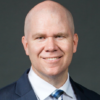
(25 capacity, limit 1 per person)
Intimate lunch session with Anne Greenhalgh.
Anne Greenhalgh

(25 capacity, limit 1 per person)
Intimate lunch session with Paul Tiffany.
Paul Tiffany

1:30pm – 3:00pm
Companies need to keep score to assess performance: growth, margin, return on equity, and total shareholder return are common metrics. But these are backward looking metrics. They do not tell you how the company will do in the future. In the age of agile, companies need to increasingly start putting forward looking and predictive metrics on their dashboards. The Agile Dashboard was researched and developed to help organizations address this gap. The Agile Dashboard looks at three categories of metrics: Speed, Interaction Time and Pivot. These are critical elements for leaders to monitor whether their organizations are prepared to operate successfully in an uncertain future. This session will explain each of the three sections of the Agile Dashboard, provide metrics for each and share examples of their applicability to financial organizations.
Joseph Perfetti

CIMA®, CPWA®, CIMC®, and RMA℠ Eligible
(Also offered Monday at 3:20pm and Wednesday at 8:45am)
In today’s economic climate, most organizations compete in red oceans, stained by the blood of competition. We fight for market share, try to maintain prices, and execute more efficiently than others. Blue Ocean Strategy suggests an alternative. It urges us to explore how we can make our value offering so distinctive that we find the blue waters of new, uncontested market space… and make the competition irrelevant. It offers a systematic approach to creating that new market space. In this workshop, we will introduce the Blue Ocean methodology, and teams will work to map a creative, visual exploration of new market opportunities against current industry realities. Tools covered will include the Pioneer-Migrator-Settler Map, The Strategy Canvas, The Buyer Experience Cycle, and The Six Paths for Exploring new market space.
Learning Objectives:
Roch Parayre

CIMA®, CPWA®, CIMC®, and RMA℠ Eligible
(Previously titled Enhancing Your Influence)
Confident, persuasive body language – and yes even charisma – can be broken down into its components and taught. In this session, participants will learn insights from psychology on body language and how it can build rapport and project confidence in order to persuade others. Through a series of interactive exercises, video analysis, and practice sessions, participants will see and experience the difference that persuasive body language makes. They will hone their abilities to read others more accurately, and to have greater choice in how they are being perceived. And, they will practice how to simultaneously project power, warmth, and presence.
Learning Objectives:
Lauren Hirshon

Burnout is a global phenomenon which is now recognized by the World Health Organization as “a
syndrome conceptualized as resulting from chronic workplace stress that has not been successfully
managed.” Stress is ever present in our work lives and with increasing demands, the need for higher
productivity, new skills, and time pressure, our jobs are becoming more hectic resulting in physical
exhaustion, emotional distress, lack of dedication and increased cynicism. In this module gain a
fundamental understanding of burnout and learn some scientifically researched strategies that will help
reduce the risk of burning out and increasing engagement at work.
Module Overview:
| Module | Topic | Participants will learn to: |
| 1 | Burnout, strategies to:
· Mitigate burnout · Promote engagement
|
· To identify symptoms of burnout
· To buffer against burnout through easy to adopt strategies · To harness stress for success as opposed to avoiding it · To increase their levels of engagement at work
|
The module is essential for the busy professional who is looking for ways to reduce the impact of
challenging work demands and increasing one’s engagement at work. This module would also be useful
for leaders in organizations who would like to influence a positive and healthy work culture that
promotes engagement. The workshop introduces skills that are not normally part of business curriculum, however, are necessary in business and personal life.
Faisal Khan

CIMA®, CPWA®, CIMC®, and RMA℠ Eligible
Do you prefer to communicate directly, emphasize facts over feelings? Are you more animated in your delivery? Do you take your listener’s feelings into account? Do you like to think first and then speak? Whatever your preference, what impact does your communication style have on others in the workplace whether one-on-one or in group meetings? How can you make the most of assets and downplay the liabilities of your communication style? Complete the HRDQ What’s My Communication Style questionnaire as pre-work, and this session will help you identify your dominant communication style and give you the opportunity to see your style in action so that you can make the most of assets and downplay liabilities. By the end of the session, you will have a greater appreciation of the impact of communication style on interpersonal relationships and results.
Learning Objectives:
Anne Greenhalgh

CIMA®, CPWA®, CIMC®, and RMA℠ Eligible
(Also offered on Monday at 3:20pm)
We are observing a current trend that has the potential to fundamentally transform a range of industries. Rather than having episodic interactions with customers, firms connect to customers in a continuous way, providing services and products as the needs of customers arise. Consider a few examples: Healthcare providers are moving from having only interactions when an urgent need arises to a “connected healthcare” model with continuous monitoring of patients. Software is increasingly moving from being installed on computers to software-as-a-service, and even the educational system is questioning whether spending multiple years on-campus can be replaced by providing students the required knowledge when needed, e.g., through on-line learning modules. At the same time, many firms are changing how suppliers are connected to customers. Firms such as Kickstarter, Venmo, Uber, and Airbnb, create connections, and thereby markets, where none had existed before. Most of these innovations are “business model” innovations that rely on recent technological advances. We identify how these new business models create value and categorize them into different models. We discuss the implications for both new entrants and existing firms in these industries.
Learning Objectives:
Nicolaj Siggelkow

CIMA®, CPWA®, CIMC®, and RMA℠ Eligible
Corporate leaders must increasingly navigate contentious social and political issues. Social activism targeting firms has grown by over 500% in the past 15 years and prominent shareholders are calling for more clarity and disclosure of corporate social and political activity. Prominent firms are also taking clear positions on issues ranging from LGBTQ issues to environmental policy. This course will provide a framework and clear strategies for assessing how to respond to social activism, including how to evaluate the likely effects of a campaign on the loyalties of various stakeholders, ranging from shareholders to consumers and regulators. We will introduce clear strategies for managing social issues, including community assessments on new-market entries, and governance arrangements that help a firm quickly monitor social issues and maneuver social crises. We will also explore how leaders can assess the risks and opportunities inherent in corporate positioning on political issues, providing a framework for determining when your firm is well-positioned to take a social or political stance.
Mary-Hunter McDonnell

As the world becomes more interconnected, firms must form links with other firms to remain competitive. Examples would be connections between phone producers and app developers to create functional solutions that are essential for the user experience. This session focuses on the creation of a strategic network, which is a set of interconnected alliances. Key decision factors in forming networks are discussed and the relative efficacy of the timing of entry, involvement in the network creation process, and resource commitment to the network are explored as success drivers from network participation.
Learning Objectives:
• Understanding how ecosystems of relationships between firms can positively impact innovation when managed well.
• Gaining perspective on the rising number of connections between firms and their partners to give clients superior products or services.
• Develop a perspective that partnerships and alliances can help create significant economic value.
Harbir Singh

CFP®, CIMA®, CPWA®, CIMC®, and RMA℠ Eligible
(This course will require a 30-minute webinar to be viewed prior to Institute Week.)
The “Great Recession” of 2008: it’s been more than ten years now and quite a bit has been written of the impact this seismic event had on the global economy as well as the U.S. political-economic system. Some have even ascribed President Trump’s rise to it, seeing his election as a reaction from both the right and the left to the failure of the elites to either prevent or contain the damage. Ultimately a number of new laws and regulations were legislated by Congress, principally the Dodd-Frank Act, but serious questions can be raised as to how effective they have been. Are we on the verge of another recession—or worse? This elective session will first present an overview of the complex interaction of events and trends that led to the catastrophe of 2008, and then describe the “solutions” that followed that presumably “saved” the capitalist system. We will conclude with discussion of the efficacy of these steps and where matters stand today—and attempt to put this entire process into a perspective that might provide some insight for the coming years of economic policy in both the US and worldwide (reader alert: it will not be pretty…). Participant discussion will be highly encouraged due to both the seriousness of the topic as well as the wide range of opinions that have been expressed about the “whats and whys” of the enacted remedies.
Learning Objectives:
Paul Tiffany

In the bestselling book, In Search of Excellence: Lessons from America’s Best Run Companies (Peters), 43 “best-in-class” companies were profiled some 35 years ago. Of the 32 public-traded entities, only eight subsequently surpassed the growth rates of their peer group while six disappeared in the intervening years—and these were the “best-run” companies! In the decade after Built to Last (Collins) was published, 8 of the profiled 18 companies were in trouble, growing slower than their peer group. As Steve Lohr writes in an article on Microsoft, “One of the evolutionary laws of business is that success breeds failure; the tactics and habits of earlier triumphs so often leave companies–even the biggest, most profitable and most admired companies–unable to adapt.” Clearly, sustained competitive advantage, Michael Porter’s definition of “strategy”, is difficult to attain. In this highly interactive seminar, Mr. Austin will outline key frameworks for identifying innovative, new avenues for growth.
Learning Objectives:
Jim Austin

CIMA®, CPWA®, CIMC®, and RMA℠ Eligible
Millennials get a bad rap. Described by members of other generations as “entitled”, another way to understand them is appreciating that Millennials are highly empowered, and are driven by a sense of agency as well as a deep connection to their values. Based on myriad cultural, economic, and social forces, Millennials are not afraid to ask for what they want at work, and to expect that they will be respected for their contributions.
In this class we will examine the stereotypes about Millennials with an eye toward dispelling ideas that are unfair, and even inaccurate, about this generational group. Through a deep dive to understand how they were raised, how they approach being led and leading, we will look to develop a more nuanced view of Millennials at work with a greater focus on their collective strengths, as well as how you can best leverage their ideas and talents.
Learning Objectives:
Yael C. Sivi

Ideal for: Sales and sales management professionals, financial advisors, and wealth managers seeking to strengthen personal and corporate brand to gain more customers.
This session focuses on establishing brand and reputational awareness, creating a differentiated value proposition, and understanding brand positioning. We will also touch on client psychology and segmentation. The goal is to understand and analyze brand as a key element needed to build an actionable marketing plan for you and your team.
Learning Objectives:
Keith E. Niedermeier

CFP®, CIMA®, CPWA®, CIMC®, and RMA℠ Eligible
Ideal for: Participants who would like to get familiar with private equity industry, learn the anatomy of a deal, industry trends, secondary purchases, co-investments, and understand the sources of value creation and the drivers of return of private equity funds.
Private equity is an asset class that has potential to generate sustainable long-term returns for its investors. Although it is relatively a new asset class that has some unique characteristics that may not be familiar to investors, it has become a key component of many investors’ portfolios. In this entry-level elective session we will cover the structure of a private equity fund, and describe how a private equity fund operates and governs its portfolio companies. We will then talk about the changing trends in the private equity industry. We will also discuss whether and how a private equity fund creates value in a changing macroeconomic landscape.
Burcu Esmer

1:30pm – 4:50pm
(Also offered on Wednesday)
Recent academic work on the science of innovation and creativity has revealed a new, evidence-based approach to coming up with new ideas and solving problems – but it is one that is not widely known outside of academia! In this session, we will first discuss these new approaches to innovating, including a number of simple tips and common mistakes. Then, in the second half of the session, you will play the Breakthrough Game, which allows you to apply the tools you learned to use in a fun and engaging way. Playing the Breakthrough Game, participants not only solve one particular challenge as a team but also, crucially, learn how to drive the innovation process in the future. You will come out of this session with short-term takeaways that will make your future idea generation sessions more productive, an actionable idea that you can pursue, and a general framework that you can use to solve problems and search for new opportunities.
Ethan Mollick

What if your entire understanding of how stress works is wrong? How would that affect your career in financial services, your ability to lead and manage others, and your family’s well-being?
In this eye-opening interactive session, you’ll see how stress research pioneers made a fundamental error when formulating the stress concept, and why this has had disastrous consequences on the way we live and work today.
Then you’ll learn the truth about where stress really comes from and discover a powerful approach to taking apart personal and professional challenges faster, without jargon, stigma, or “touchy-feeliness.” This process has been beloved by thousands of skeptical, Type A financial services leaders because it’s smart, it’s simple, and it works.
All participants will receive a pass to Andy Bernstein’s online Resilience Academy after the session to continue the learning journey.
Learning Objectives:
Andrew Bernstein

(Also offered on Wednesday – This class will require pre-work to be completed prior to the participants’ arrival.)
This workshop will help strengthen your influence and persuasion skills. You need these skills to win support for important initiatives, achieve organizational alignment, and implement strategies. Through a series of interactive discussions and role-plays, you will answer four key questions in this workshop: What are the steps that led to buy-in? What is your communication style and how do you use to engage stakeholders? How do you make your ideas simple and compelling? How do you generate lasting commitment? The workshop content is drawn from the book The Art of Woo: Using Strategic Persuasion to Sell Your Ideas (Portfolio/Penguin), co-authored by G. Richard Shell and Mario Moussa.
Learning Objectives:
Participants will be asked to complete a survey and to read a chapter of “The Art of Woo” prior to attending this session.
Mario Moussa

3:20pm – 4:50pm
CIMA®, CPWA®, CIMC®, and RMA℠ Eligible
(Previously titled Collaboration Skills Development)
(Also offered on Wednesday at 3:20pm)
In this experiential session, participants explore behaviors that improve collaborative relationships. The session introduces practical, applicable skills for increasing the ability to effectively communicate with others — to hear and be heard. The atmosphere of the session is lighthearted and fun, utilizing a variety of activities, including exercises based in improvisational theater training. No one is singled out — all exercises are performed in large or small groups. The facilitator creates a comfortable atmosphere in which all participants are supported and encouraged. Every exercise is debriefed to maximize its application to the participants’ unique business-place needs. The result is a positive transformation of the participants’ communication skill-set.
Learning Objectives:
Bobbi Block

CIMA®, CPWA®, CIMC®, and RMA℠ Eligible
(Also offered Monday at 1:30pm and Wednesday at 8:45am)
In today’s economic climate, most organizations compete in red oceans, stained by the blood of competition. We fight for market share, try to maintain prices, and execute more efficiently than others. Blue Ocean Strategy suggests an alternative. It urges us to explore how we can make our value offering so distinctive that we find the blue waters of new, uncontested market space… and make the competition irrelevant. It offers a systematic approach to creating that new market space. In this workshop, we will introduce the Blue Ocean methodology, and teams will work to map a creative, visual exploration of new market opportunities against current industry realities. Tools covered will include the Pioneer-Migrator-Settler Map, The Strategy Canvas, The Buyer Experience Cycle, and The Six Paths for Exploring new market space.
Learning Objectives:
Roch Parayre

CIMA®, CPWA®, CIMC®, and RMA℠ Eligible
(Also offered on Monday at 1:30pm)
We are observing a current trend that has the potential to fundamentally transform a range of industries. Rather than having episodic interactions with customers, firms connect to customers in a continuous way, providing services and products as the needs of customers arise. Consider a few examples: Healthcare providers are moving from having only interactions when an urgent need arises to a “connected healthcare” model with continuous monitoring of patients. Software is increasingly moving from being installed on computers to software-as-a-service, and even the educational system is questioning whether spending multiple years on-campus can be replaced by providing students the required knowledge when needed, e.g., through on-line learning modules. At the same time, many firms are changing how suppliers are connected to customers. Firms such as Kickstarter, Venmo, Uber, and Airbnb, create connections, and thereby markets, where none had existed before. Most of these innovations are “business model” innovations that rely on recent technological advances. We identify how these new business models create value and categorize them into different models. We discuss the implications for both new entrants and existing firms in these industries.
Learning Objectives:
Nicolaj Siggelkow

In a rapidly changing environment, businesses have new opportunities to redefine their value proposition, reimagine their organization, and develop structures, system and processes to achieve new outcomes. However, leading transformational change requires navigating disruptive innovation and the new business models they create. In this session, we will explore the basic principles of disruptive innovation. Through an interactive lecture format, we will examine why organizations have trouble innovating and reacting to innovations. Participants will reflect on strategies to effectively incubate innovation, build teams that can operate in ambiguity, and cultivate a “start-up” mindset. We will use case studies from companies and leaders that have found success by becoming their own disruptors.
Learning Objectives:
Lauren Hirshon

DISRUPT BY DESIGN™ is a more in-depth exploration of the core capabilities and conditions that leaders cultivate to make strategic, creative and design thinking behavior translate into business, customer and organizational innovation. The course is a playful, practical and easy-to-use approach to helping leaders and entrepreneurs create a culture of innovation and achieve breakthrough results more consistently.
We live in a complex world with many challenges that are calling for an innovative response. None of these challenges lend themselves to easy or quick solutions. DISRUPT BY DESIGN™ is an approach to leadership and new ventures that considers the relationship between the individual parts of an organizational system (internal and external perspective) and how the actors (customers, regulators, suppliers, workforce, etc.) can be best combined and leveraged to achieve disruptive and fast breakthroughs.
The good news is that DISRUPT BY DESIGN™ is a learned behavior and mindset that will help breakthroughs become more frequent, ideas be more impactful and commercial success more likely. When leaders take a strategic pause and immerse themselves, for instance, in the experience a customer may have with their company’s products, the leader(s) are more apt to identify unmet needs and generate opportunities for innovation.
Learning Objectives:
Learning Modules:
Andrew Pek

CFP®, CIMA®, CPWA®, CIMC®, and RMA℠ Eligible
Impact and ESG investing has skyrocketed in popularity with investors worldwide. But many people don’t realize how wide-ranging these disciplines have become. Twenty years ago it was stock or occasionally other portfolios which screened companies in or out based on their social investing characteristics. Today, ESG and social-impact oriented strategies include new products and asset classes, influencing corporate governance through shareholder activism, Corporate Social Responsibility, Donor-Advised Funds, and bold for-profit approaches to helping the poor in the developing world.
This session provides an overview of the most important ESG and impact-investing concepts and styles and a look at whether investment return need be sacrificed for social benefit. It offers a high-level view of the products and strategies now permeating not only institutional, but retail investing as well.
Christopher Geczy

(Also offered on Wednesday at 3:20pm)
High performance requires effective execution and, for many organizations, change management. Unfortunately, major change efforts have a dismal track record. In multiple studies, highlighting the experiences of hundreds of companies initiating large-scale changes, the overwhelming results are poor. For example:
As the Harvard Business Review’s editor articulated so well in discussing why so many transformation efforts fail:
“…no business survives over the long term if it can’t reinvent itself. But human nature being what it is, fundamental change is often resisted mightily by the people it most affects: those in the trenches of the business. Thus, leading change is both absolutely essential and incredibly difficult” (Kotter 2007).
Learning Objectives:
Jim Austin

CFP®, CIMA®, CPWA®, CIMC®, and RMA℠ Eligible
(Also offered on Wednesday at 8:45am – This course will require a 30-minute webinar to be viewed prior to Institute Week.)
The US elections of both 2016 and 2018 have created a potentially massive shift in American policy, both domestic and global. The question now—as the 2020 elections loom– is how permanent the changes will become. In the international arena President Trump staked out positions radically different from those of the post-World War II “Bretton Woods System” that guided much of the world as “globalization” took hold and Emerging Nations—especially China– prospered. The result has been uncertainty for political and economic decision-makers worldwide. Will a “New World Order” of “economic nationalism” take root and flourish, perhaps one that leaves lasting impact on the shape of trade relations for generations to come? Or will Trumpism result in only a brief deviation from the liberalization of trade (and global politics) of the recent past? We will conclude with a consideration of potential outcomes for the coming national election, and what implications they hold for both US firms as well as its citizens in the era of President Trump. Participant discussion will be strongly encouraged.
Learning Objectives:
Paul Tiffany

Learning Objectives:
Karen Reivich

CFP®, CIMA®, CPWA®, CIMC®, and RMA℠ Eligible
This is a session that covers recent developments in global economic growth and innovation, with an emphasis on current events and policy applications. The session discusses the current drivers of innovation and economic growth and analyzes the strengths and challenges of financial analysis for long-term innovative investment decisions. Topics covered include: national income accounting, total factor productivity, investment in capital and labor, inflation, interest rates, monetary policy, net present value and the internal rate of return.
Learning Objectives:
• Understanding current economic climate
• Implications for short and long-term investment decisions
• Assessing upcoming risks and opportunities
Jules Van Binsbergen

The hardest job is boiling down complex information into a short pitch, yet that is what leaders are expected to do and what you expect from your direct reports. No one has the time or attention span for much more than a minute. In this course you will learn how to literally “Make a Minute Matter” which involves what you say and how you say it. You will learn and practice the 3×3 Message development method and an easy formula to provide structured feedback on a speaker’s delivery style. This will be highly interactive– each of you will have the opportunity to pitch and receive individual feedback. You will walk away a better communicator and a better coach for your employees.
Learning Objectives:
Mary Civiello

Our thoughts heavily influence our behavior. Having deliberate frameworks to organize our thoughts
can thus help influence our behavior for the better. This session is a research-based introduction to such
frameworks. The skills learned in the module are a steppingstone to sustainable behavioral change,
supporting ways in which people can thrive despite adversity. The module targets three of the
researched mental frameworks that help build resilience, improve mental health, and help counter
stress. The techniques are also useful to those seeking to improve engagement at work. The hands-on
module is designed to help participants practice skills in class and leave with easy to use tools that can
be practically applied in their lives.
Module Overview:
| Module | Topic | Participants will learn to |
| 1 | Mental Agility:
· Practical frameworks · Resilient mindset
|
· Adopt easy to use tools to function with clarity of thought during challenging times· Develop a resilient mindset to fight adversity and invite growth· Develop skills to adopt an optimistic outlook in the face of adversity |
The module would be particularly useful for anyone who is having difficulty bouncing back from
adversity, facing stress, or has a hard time coping with work demands. The workshop is geared to
develop skills that are not traditionally taught in business curriculum, however, are necessary in business and personal life.
Faisal Khan

CIMA®, CPWA®, CIMC®, and RMA℠ Eligible
Your reputation precedes you. How do others see you at work? Are you perceived as cool, calm, and collected? Emotionally expressive? Competitive? A team player? Sociable? Independent? A people person? Task-focused? Conscientious? Willing to take a risk? Imaginative? Practical? Do you seem to prefer formal education or hands-on learning? How do these perceptions about you play out when you face an issue, problem, or adversity at work? What consequences do they have for better or worse? Complete the Hogan Personality Inventory as pre-work, and this session will give you the opportunity to see yourself as others see you, reflect on your strengths, and consider how to make the most of strengths and downplay liabilities.
Learning Objectives:
Anne Greenhalgh

(Previously taught as a lunch lecture)
At 92 million strong, Millennials are the largest generation and the future of business, both as consumers and as the heart of the new workforce. However, they have sharply different attitudes and expectations than previous generations. Millennials have grown up as digital natives in a rapidly changing world that endured a generation-defining recession. This session will explore Millennials as consumers, investors, and employees. Discussion will center on Millennials’ attitudes, psychology, and decision-making. We will also explore various segmentations and differences among Millennials, as well as contrasting them to Baby Boomers and the up-and-coming Generation Z.
Keith E. Niedermeier

5:00pm – 6:15pm
Join fellow participants and the SII Board of Trustees at Houston Hall for an all years networking reception.
7:15am – 8:15am
Breakfast will be served at all SII hotel properties.
8:45am – 10:15am
CIMA®, CPWA®, CIMC®, and RMA℠ Pending
In the final required ethics session, Professor Conti-Brown builds on previous discussions of ethics and culture to discuss how to operationalize these principles. Conti-Brown introduces the concept of easy, medium, and hard questions. Easy ethical questions are those that essentially belong to the criminal law. Nearly everyone agrees on right and wrong on these questions and while the financial industry has had more than its share of individuals and firms getting these questions wrong, these are not worth our main attention. Medium questions are those where most people agree on the same ends, but disagree on the appropriate means. And hard questions are those where people in good faith disagree on what constitutes ethical behavior. After developing this framework, Conti-Brown guides participants through its application to several examples in several aspects of the financial services industry.
Peter Conti-Brown

10:35am – 12:05pm
CFP®, CIMA®, CPWA®, CIMC®, and RMA℠ Eligible
In 2020, finance professionals face a time of uncertainty on both financial and geopolitical fronts. This uncertainty follows on the past two decades of frequent bouts of volatility in both economies and asset markets worldwide. We witnessed the hype of the dot.com bubble and its subsequent bursting, leading to a global recession. The global economy and asset markets then boomed along with the debt-fueled global real estate bubble. The bursting of that speculative bubble caused both a worldwide stock market crash and “Great Recession.” Investors who did not panic have gained from a strong recovery in global asset markets starting in March 2009. Many real and financial assets both in the US and abroad reached record-high prices this winter. The high valuations, along with significant risks, including national security conflict with Iran, a potential trade war with China, and a possible further global economic slowdown, cause fears of a downturn.
This session will separate fact from fiction while analyzing the implications of global linkages for investors. The uncertainty regarding political uncertainty and conflict, the U.S. and global economies, commodity prices, interest rates, exchange rates, job markets, monetary policy, and the sustainability of government debt levels all point toward the need for a truly global diversification strategy. This session will feature a strategic look at the economic, financial, and demographic trends that are likely to endure in the crucial nations of the future.
Learning Objectives:
Jeffrey Rosensweig

12:30pm – 1:15pm
(25 capacity, limit 1 per person)
Intimate lunch session with Jim Austin.
Jim Austin

(25 capacity, limit 1 per person)
Intimate lunch session with Yael Sivi.
Yael C. Sivi

1:30pm – 3:00pm
In an era of unprecedented uncertainty, the ability to think strategically has emerged as a critical skill in helping leaders and organizations navigate change and sustain growth. The Strategic Leadership session develops capability in each of the Six Elements of Strategic Thinking, reinforced by compelling exercises and examples.
LEARNING OBJECTIVES:
Roch Parayre

7:15am – 8:15am
Breakfast will be served at all SII hotel properties.
8:45am – 10:15am
(Also offered on Wednesday at 1:30pm)
Thriving at work, high life satisfaction, happiness and resilience all require the same capacity: the capacity to navigate difficult moments well. Our conversation considers research from the fields of Positive Psychology and Appreciative Inquiry, fields which examine who we are at our best as individuals, teams and organizations. We’ll explore tools and perspectives that enable us to handle inner conflict, difficult conversations and moments of extraordinary stress wisely. These are tools that bring mindful awareness to any one moment and change that moment into one of opportunity; opportunity in which we not only address the stressor directly, but leverage that very conflict to become more authentic, more rooted in our strengths and values, more clear about the road ahead and more of our better selves. In other words, better leaders. Attendees will leave with experience practicing mindful pausing, identifying one’s ideal self, and leveraging positive change in themselves and others in the most challenging moments.
Learning Objectives:
Maria Sirois

Artificial intelligence can help business leaders make better decisions but there are multiple challenges along the way. This session introduces its participants to the state-of-the-art in AI-based decision-making regarding people, operations, innovation, and other responsibilities of corporate managers. In comparison with the visible gains from artificial intelligence in pattern recognition and natural language processing, the progress in management and leadership faces some domain-specific challenges: complex decisions, small unbalanced data, legal constraints, and organizational dynamics. Commercial and in-house apps are opaque when it comes to data sources and their quality, as well as algorithms’ accuracy, generalizability and role in decision-making. Moreover, AI relies on machine-learned predictions derived from correlations and therefore do not ensure actionable insights. We will identify possible responses to these challenges, including causal algorithms, randomization, and novel organizational processes that lead to more effective and ethical AI-management systems.
Valery Yakubovich

CIMA®, CPWA®, CIMC®, and RMA℠ Eligible
(Also offered Monday at 1:30pm and 3:20pm)
In today’s economic climate, most organizations compete in red oceans, stained by the blood of competition. We fight for market share, try to maintain prices, and execute more efficiently than others. Blue Ocean Strategy suggests an alternative. It urges us to explore how we can make our value offering so distinctive that we find the blue waters of new, uncontested market space… and make the competition irrelevant. It offers a systematic approach to creating that new market space. In this workshop, we will introduce the Blue Ocean methodology, and teams will work to map a creative, visual exploration of new market opportunities against current industry realities. Tools covered will include the Pioneer-Migrator-Settler Map, The Strategy Canvas, The Buyer Experience Cycle, and The Six Paths for Exploring new market space.
Learning Objectives:
Roch Parayre

This session is an introduction to the emerging field of “decision science” which lies at the confluence of behavioral economics and neuroscience and deals with better understanding the limits of rationality of human leaders as decision makers. The focus is on understanding common biases and heuristics that “rationality” of decisions, the impact that personal power has on these decision processes, and how to structure organizations and processes to minimize the negative impacts of them. The presentation includes a number of short practical exercises to highlight the limits of human rationality within all of us. The presenter is a retired Army major general, now resident faculty at Harvard Kennedy School, who has over three decades of decision-making experience and observations of top-level leaders.
William Rapp
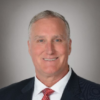
The reality is that nobody likes conflict very much. Of course, there are those who thrive on conflict, but most managers would prefer to avoid it. And too often they do just that—to the detriment of those involved.
This session will teach participants how to manage conflict. They will learn a specific conflict resolution model and the skills that make it work. And they will practice each step to ensure that they understand how to apply the skills.
Participants will learn how to acknowledge concerns and issues with empathy and understanding. They will explore how to get the others speaking to understand what the real issues are. And they will be introduced to the art of reframing in order to problem solve effectively and resolve the issues.
Avoiding conflict is not what leaders do. They resolve it as quickly as possible and this session will introduce participants to the skills, models and techniques to do this effectively.
Learning Objectives:
Eric Baron

(Also offered on Wednesday at 3:20pm)
Research from Google’s best-performing teams suggests that among many factors that contribute to the health of a team, the most important lever is the experience of “psychological safety” on the team. Drawing upon current research– from Google, MIT and other organizations — we will explore what psychological safety means for employees, why it’s so important, and what you, as leaders can do to create the conditions for it on your teams.
Though we may think we are creating the conditions for collaboration to occur, the truth is that, without awareness, we may inadvertently undermining the experience of safety team members have of you, and of the team. What’s at stake is a more collaborative team environment, as well as greater engagement and aliveness for all.
Learning Objectives:
Yael C. Sivi

CFP®, CIMA®, CPWA®, CIMC®, and RMA℠ Eligible
(Also offered on Monday at 3:20pm – This course will require a 30-minute webinar to be viewed prior to Institute Week.)
The US elections of both 2016 and 2018 have created a potentially massive shift in American policy, both domestic and global. The question now—as the 2020 elections loom– is how permanent the changes will become. In the international arena President Trump staked out positions radically different from those of the post-World War II “Bretton Woods System” that guided much of the world as “globalization” took hold and Emerging Nations—especially China– prospered. The result has been uncertainty for political and economic decision-makers worldwide. Will a “New World Order” of “economic nationalism” take root and flourish, perhaps one that leaves lasting impact on the shape of trade relations for generations to come? Or will Trumpism result in only a brief deviation from the liberalization of trade (and global politics) of the recent past? We will conclude with a consideration of potential outcomes for the coming national election, and what implications they hold for both US firms as well as its citizens in the era of President Trump. Participant discussion will be strongly encouraged.
Learning Objectives:
Paul Tiffany

CIMA®, CPWA®, CIMC®, and RMA℠ Pending
(Previously titled Improving Decision-Making)
(Also offered on Wednesday at 1:30pm)
Why do we fall prey to the “art of the con”? Why do some individuals gain support for their ideas in meetings, while others seemingly languish? At the core of any organization’s performance are the decisions that leaders make…those financial, strategic, human resource, marketing and leadership decisions that in the end determine an organization’s performance. Thus, understanding how to improve decision-making is a truly fundamental leadership requirement. In this session, we will discuss the decision “traps” most commonly observed. These biases are unfortunately widespread because they are in large part determined by how the human brain operates. Drawing on recent research, this session will expose participants to decision biases through short exercises and offer ways to alleviate them. Issues to be covered: outlining the components of great “cons”; establishing “the problem” to be solved; making a decision; and, building trust.
Learning Objectives:
Jim Austin

CIMA®, CPWA®, CIMC®, and RMA℠ Eligible
(Also offered on Wednesday at 1:30pm and 3:20pm – This class will require pre-work to be completed prior to Institute Week.)
The Herrmann Brain Dominance Instrument (HBDI™) is a 120-question diagnostic survey, the answers to which indicate an individual’s thinking style preferences. Our minds have preferred modes of operating that impact how we see the world, how we interpret what we see, and how we communicate with others who are also operating from their own preferred modes of thinking and speaking. Thinking preferences influence communication, decision-making, problem solving, and management styles. By understanding their thinking style preferences, participants will gain a new perspective of themselves and the people with whom they interact each day. In this HBDI session, a series of interactive exercises is used to get participants comfortable with the model, conversant about each of the 4 styles, and aware of the dangers of over-simplifying the process. This session offers a wide range of exercises and will choose a combination of exercises specific to each group’s needs. Participants will also explore when thinking styles are problematic. Through development of self-inventory, participants will learn about their own hot buttons and the hot buttons of others and develop strategies for addressing these situations in a constructive manner. During the program we also address the effects of individual and team HBDI data on some main leadership issues of our time, like enhancing our agility and creative thinking in times of fast pace change and ambiguity. This course will require a 120-question survey to be completed prior to the participants’ arrival.
Learning Objectives:
Chuck McVinney
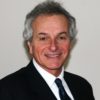
(Also offered Wednesday at 1:30pm)
The Negotiation Workshop is fun and very interactive. It will utilize simulations to highlight key concepts and skills. Participants will conduct mock negotiations and then discuss what occurred. The workshop is intended for those who would like to improve their negotiation skills as well as those who are already accomplished negotiators.
Learning Objectives:
Eric Max

CIMA®, CPWA®, CIMC®, and RMA℠ Eligible
Workplace interactions can create extraordinary engagement and vigor that allow people and organizations to thrive, or they can have the opposite effect. This workshop explores the difference between the two. Our interactions at work, however brief or extended they might be, have qualities that if better understood can allow us to harness the positive impacts of them. Gaining insights into these qualities is essential for us to perform at our best. We are social beings that require a connection; many argue that most of the work in organizations is conducted through informal methods and networks based on our connections. While communication is one way we connect, if done correctly it can bind us, or if done incorrectly it can alienate us. The workshop will help participants understand distinctions between communicating and connecting for results. Drawing from psychological and management research on positive emotions, relationships, and connections at work; participants will learn how to create and then harness high-quality connections for the benefit of all.
Learning Objectives:
Faisal Khan

CIMA®, CPWA®, CIMC®, and RMA℠ Eligible
(Also offered on Wednesday at 1:30pm)
Today’s business environment is no longer described as having an “ebb and flow”, but rather a permanent “whitewater” condition. This increased speed of change has caused a movement from discrete-event strategic planning to more dynamic planning – the quarterly strategy “refresh”, for example. However, many organizations struggle with the ability to stay nimble to respond to rapid market changes because of a variety of factors. This session explores the common barriers to agility, discusses ways to create a culture of productive paranoia, and describes three concrete actions in achieving strategic agility.
Learning Objectives:
Kathy Pearson

(Previously titled Strategies for Success)
(Also offered on Wednesday at 3:20pm)
Nearly every businessperson agrees that to have a successful company you need a good strategy, yet few people create a “Success Strategy” for their own lives. During this session attendees will complete several personal exercises to help them gain clarity on what they must do to create a more happy, balanced, successful life and career. This program is shared with senior executives at major organizations around the world and more than 90 colleges and universities in America and beyond.
Learning Objectives:
John Spence
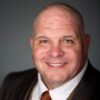
Chris Maxwell’s research shows that world-class mountain guides embody six key leadership strengths, and that these same strengths have a significant impact when applied within organizations. From lessons learned from his travels with expert guides on mountain peaks and high trails around the world, Maxwell reveals that guides are socially intelligent, adaptable, empowering, trust-builders, risk-aware, and focused on the big picture. Organizational leaders who model the six leadership strengths of guides will build more effective teams, actively support the vision of the organization, and uplift the people who work to make that vision a reality. In small groups, session participants will have an opportunity to reflect on the six leadership strengths of guides, and identify how they can be implemented within the host organization. Chris’ book, Lead Like a Guide: How World-Class Mountain Guides Inspire Us to Be Better Leaders was published by Praeger in 2016.
Learning Objectives:
Chris Maxwell

10:35am – 12:05pm
CFP®, CIMA®, CPWA®, CIMC®, and RMA℠ Eligible
Central banks have come to be regarded as the “only game in town” for economic policy-making. But what are these curious institutions, where did they come from, and where are they going? This session analyzes these and related issues by providing a brief history of central banking and focusing on the ways that central banks today and in the future will dominate the landscape for banking and finance the world over. The focus will be on the U.S. Federal Reserve System, the European Central Bank (and its predecessors), and the People’s Bank of China.
Peter Conti-Brown

CFP®, CIMA®, CPWA®, CIMC®, and RMA℠ Eligible
(This course will require a 30-minute webinar to be viewed prior to Institute Week.)
Ideal for: Participants who want to improve their appreciation of and insights regarding the current political economy of the Peoples Republic of China, and the relationship between that nation’s recent economic expansion and prospects for the future of the United States of America.
The rise of China since the 1990s has been the most significant economic event in the world in recent times. However, the actions of the Administration of President Trump since 2016, as well as his own frequent outbursts on the relationship of our nation with China, have created great uncertainty about the future—including in financial markets. Today we appear to be at a crossroads about how we will respond as a nation in the coming years to China’s political and economic evolution. This elective session will first briefly review the remarkable rise of the Chinese economy from the rise of Mao in the mid-20th Century into the current era of the early 21st Century. We will focus on the historical roots of that transformation, and how these have shaped the current attitudes and perspectives of the Chinese leadership towards economic priorities, growth, and relations with its off-shore business entities. We will then turn specific attention to the prospects for future political-economic relations between the PRC and the USA as the “American Century” winds down and an aggressive new American President with a stated nationalist agenda has taken the helm—while in China a transformative President appears determined to raise that country to global preeminence if not outright superiority over the US. Participants will be challenged to consider how the many benefits of “doing business with China” for American firms must be balanced against the ultimate ends and goals of that nation as they relate to the value proposition of the United States—which includes respect for democracy, free markets, a rules-based world order, human rights– and its own ambitions in the decades ahead.
Learning Objectives:
Paul Tiffany

CFP®, CIMA®, CPWA®, CIMC®, and RMA℠ Eligible
This session will focus on our latest market and economic perspectives on Emerging Markets. Following a year of weak and slowing activity in 2019, investors wonder if the softness will continue or if there is potential for a comeback in Emerging Markets. We believe there are green shoots.
The 2019 Emerging Market equity underperformance was primarily driven by slowing growth, trade tensions, and idiosyncratic geopolitical events that buffeted returns. Performance may gain momentum as these conditions unwind. We believe the macro environment will stay supportive of risk assets, central banks will have accommodative positions, and emerging equities remain poised for a comeback. Going forward, we expect more differentiation across countries as growth and earnings drive returns across equities, rates, and credit.
In our view, Emerging Markets remain a key driver of global growth over the longer term. Tremendous demographic growth, an expanding middle class, and productivity advances all provide secular tailwinds to Emerging Markets. Though there will be variation at the country, sector, and, company level, we continue to believe that exposure to the Emerging Markets across assets classes should be a critical part of investors’ strategic long term asset allocation.
Learning Objectives:
Candice Tse

CFP®, CIMA®, CPWA®, CIMC®, and RMA℠ Eligible
This year promises to bring many new emerging regulatory issues to financial services firms. A proactive approach to compliance in identifying and implementing sound business practices, policies and procedures to promote a good working relationship with industry regulators will be even more important in 2019. This course, which is intended for individuals with a basic understanding of the U.S. regulatory structure for financial institutions, will focus on pending and current rulemaking that will impact the financial services industry, examination priorities for 2019 and best practices for interacting with many types of regulators).
Learning Objectives:
Jesse Hill, Joan Schwartz


CFP®, CIMA®, CPWA®, CIMC®, and RMA℠ Eligible
Ideal for: Participants who want to understand why ETFs are displacing mutual funds, improve their understanding of the ETF due diligence process, and learn to evaluate passive investments. If you’ve ever wondered how to choose among seemingly identical products, worried about ETF trading, or scratched your head about tracking error, this is the class for you. Buy-side due diligence teams, risk managers, wealth managers, and active equity and fixed income managers can all benefit.
Exchange-traded funds have grown enormously over the past decades, capturing market share from mutual funds, hedge funds, and separately managed accounts. One out of every five dollars in publicly available equity funds is now in ETFs, up from one in eight just five years prior, and zero twenty-five years ago. The active-to-passive trend is even starker, with active management losing ground every year since 2014.
As investors embrace passive management and the exchange-traded fund structure, fiduciaries can find themselves facing new questions. Often, simple rules of thumb such as looking for the fund with the highest asset level, lowest expense ratio, or highest daily inflows can lead to costly mistakes.
This session will cover the fundamentals of ETF due diligence, with case studies, lively lectures, and Q&A. Topics will include in-kind creation/redemption, which is the key differentiator between ETFs and mutual funds and the driver behind ETF’s competitive advantage; holding cost and risk analysis; liquidity evaluation and trade analysis; and, most importantly, index construction as the most critical driver of long-term performance.
Learning Objectives:
Elisabeth Kashner

CFP®, CIMA®, CPWA®, CIMC®, and RMA℠ Eligible
Financial regulation in the United States has always been a complicated patchwork of functional divisions between federal agencies, state regulators, and discrete parts of the financial industry. Understanding how these regulators work together is still complicated, but it is something with which financial professionals have to grapple. This session will show you the rules of the road for the financial regulatory system we have so that you can maximize the amount of open water for your business and make sense of the new priorities of financial regulators.
David Zaring

CFP®, CIMA®, CPWA®, CIMC®, and RMA℠ Eligible
Review and discuss the basics of foreign exchange (FX) rate markets: terminology, institutional features, common contracts, and market size and structure. Introduce concepts of cross currency rates as effective exchange rates. Demonstrate the link between FX markets and global money markets. Discuss basics of hedging and speculating in the FX market.
Learning Objectives:
Gordon Bodnar

CFP®, CIMA®, CPWA®, CIMC®, and RMA℠ Eligible
Ideal for: Non-operations professionals in the securities industry.
This course provides a broad and basic perspective of brokerage operations covering Global Markets across a range of products, functions and services. Topics will include the life cycle of securities transactions from execution through clearance/settlement and custody, as well as critical client service and operations risk management functions. Operations will be discussed from both a macro industry perspective and the inner workings of individual broker/ dealers.
Learning Objectives:
Kristin Kennedy

CIMA®, CPWA®, CIMC®, and RMA℠ Eligible
In theory, retirement begins on the day an employee receives their last paycheck—that is also the day that they begin to looking at their investments differently. The paycheck is, in essence, an investment safety net and one that no longer exists for a retiree. Shifting demographics, elongated lifespans, increasing inflation expectations, the decline in pensions, and secular changes in the interest rate environment are just some of the issues forcing the financial services industry to redraw the playbook for retirement income. This session will explore the differences between the accumulation and distribution phases of the investing cycle. It will detail the history of retirement cash flow generation and introduce a new, more diversified approach using a wide array of investment solutions available in today’s marketplace. With more than $2.5 trillion in self-managed 401k assets preparing for rollover in the next decade, professional advice has never been more needed. For many, particularly the underfunded, it could be the difference between eating caviar or cat food in retirement.
Learning Objectives:
Bryan Piskorowski

CIMA®, CPWA®, CIMC®, and RMA℠ Eligible
Did you ever wonder how the firm you work for makes money? Have you listened to your Chief Financial Officer talk about the quarterly earnings, and walked away scratching your head? This introductory session developed for those without a financial background takes a simplified look at where the money comes from and where it goes to determine the profit (loss) announced in that last quarterly report. Focusing on financial services firms, we will look at the businesses of our industry and how they drive the four core operating activities. In layman’s terms we will break down the income streams and expenses taking the jargon out of financial reporting. If you would like a simple explanation of “ratios” like EBITDA, EPS, ROI, RWC and buzz words like Tier 1 Capital, deferred tax assets and non-counterparty risk, then this is the session for you.
Following this session, you will be able to:
This way, the next time your firm reports earnings, you will be able to understand the rhetoric, the balance sheet and the income statement, making you a better-informed employee.
Gerald Schreck

CFP®, CIMA®, CPWA®, CIMC®, and RMA℠ Eligible
The equity markets play a central role in the U.S. economy, and as a result there is always considerable public debate about market structure reform. This session will focus on how the U.S. market structure operates, explore why changes are being discussed, and how this all connects to increasing investor confidence. The session will provide background on how, and why, the market structure evolved to what it is today, what were the intentions of the legislation and regulations that shaped it, and what were some important unintended consequences.
Learning Objectives:
Theodore R. Lazo, Larry Leibowitz


CLE® Eligible; CIMA®, CPWA®, CIMC®, and RMA℠ Eligible
This session will simulate a real securities arbitration. Participants will watch a condensed proceeding based on common investor disputes, with experienced trial attorneys playing the roles of Claimant’s and Respondents’ counsel. A discussion of case, and of best practices to prevent litigation and client disputes, will follow. Participants will receive a one-page background fact document prior to attending this session.
Learning Objectives:
Allison Patton, , Michael Ungar


CFP®, CIMA®, CPWA®, CIMC®, and RMA℠ Eligible
Economies and markets globally are impacted by the policy actions of Central Banks, especially the US Federal Reserve (FED).
Central Banks such as the FED have a predominant influence on interest rates, which have major impacts on economies and financial markets. The “inverted yield curve” and the FED’s reaction to it in 2019 are prime examples of the interaction between monetary policy and economic forecasts. The FED has a dual mandate to maximize employment while also keeping inflation low and steady. The FED monitors key variables related both to the job market and to inflation. We will analyze different gauges on the Federal Reserve’s “job market dashboard” and its “inflation dashboard.” The U.S. now exceeds ‘full employment’ as commonly defined and measured by the official unemployment rate. However, other metrics may not indicate truly full employment. We will analyze various forms of underemployment. We will discuss the possibility that there is still slack in the labor market that could account for the relatively slow wage growth the US economy is still generating.
Our analysis of the “inflation dashboard” will show that the FED monitors a variety of metrics which are crucial for its decisions about interest rates. These decisions have a strong influence on financial markets. We will discuss the recent path and forecasts for inflation, in light of the FED’s targets.
Beyond the FED, we will analyze the policies and actions of other key Central Banks, including those which have adopted negative interest rates. By looking at various Central Banks, we can gain insight into the movements of exchange rates as well as of interest rates.
This session will engage participants by analyzing the current state and future prospects for monetary policy. This analysis will enable participants to explore the future of economies and financial markets.
Learning Objectives:
Jeffrey Rosensweig

CFP®, CIMA®, CPWA®, CIMC®, and RMA℠ Eligible
Ideal for: Customer-facing industry professionals or any participants interested in understanding regulatory controls designed to protect investors.
Whether you are a financial advisor or an individual investor, it is important to understand how regulations protect investors and contribute to the trust in and stability of our markets. This session provides a broad foundation of regulations that address current investor protection issues. It will be presented as an interactive jeopardy game, exploring five key categories:
Learning Objectives:
Kurt Wachholz

CFP®, CIMA®, CPWA®, CIMC®, and RMA℠ Eligible
With limited other resources, clients are turning to their financial professionals for advice on Social Security. Advisors who can provide education and guidance on Social Security as part of the retirement planning process are more likely than their peers to retain retiring clients, grow share of wallet and gain referrals.
Learning Objectives:
Robert Kron

12:30pm – 1:15pm
(25 capacity, limit 1 per person)
Intimate lunch session with Bobbi Block.
Bobbi Block

(25 capacity, limit 1 per person)
Intimate lunch session with Mario Moussa.
Mario Moussa

(25 capacity, limit 1 per person)
Intimate lunch session with Roch Parayre.
Roch Parayre

1:30pm – 3:00pm
(Also offered on Wednesday at 8:45am)
Thriving at work, high life satisfaction, happiness and resilience all require the same capacity: the capacity to navigate difficult moments well. Our conversation considers research from the fields of Positive Psychology and Appreciative Inquiry, fields which examine who we are at our best as individuals, teams and organizations. We’ll explore tools and perspectives that enable us to handle inner conflict, difficult conversations and moments of extraordinary stress wisely. These are tools that bring mindful awareness to any one moment and change that moment into one of opportunity; opportunity in which we not only address the stressor directly, but leverage that very conflict to become more authentic, more rooted in our strengths and values, more clear about the road ahead and more of our better selves. In other words, better leaders. Attendees will leave with experience practicing mindful pausing, identifying one’s ideal self, and leveraging positive change in themselves and others in the most challenging moments.
Learning Objectives:
Maria Sirois

Session Goal: To lead in dynamic, complex environments, leaders need to understand who they are, and what values and convictions drive their thinking and behavior. In this session, participants learn that leadership is an identity rather than merely a position or role, a set of skills, or a list of “things that you do.” Participants better appreciate their own evolving perspective on leadership, and are able to see leadership and inspiration from both organizational and personal perspectives.
Learning Outcomes:
We’ll open the session with a discussion relating leadership and identity, “leader” as who we are AND what we do (not merely a role or skill set). We often find it easy to lead “from a distance,” by using an organizational lens to understand the change process, and the challenges associated with implementation. While an organizational perspective is useful and informative, the challenges associated with leadership are often connected to the identity, personality and style of the leader. Participants will be challenged to reflect on how their life experiences have influenced their values and leadership style.
Todd Henshaw

CFP® Eligible ; CIMA®, CPWA®, CIMC®, and RMA℠ Pending
Public policy always impacts economies and financial markets. Such impacts are particularly pronounced now. The uncertainty surrounding the upcoming election as well as trade, fiscal, geopolitical, and monetary policy is contributing to heightened market volatility.
The Tax Reform package was the major economic initiative of the Trump administration and Congress. We will analyze the economic and financial impacts. The tax cuts likely contributed to the “Trump bump” in economic growth and the stock market during 2019. However, the tax cuts are increasing the Federal Government deficit, which was already forecast to grow significantly. The extent of the impact is uncertain, so we will discuss possible scenarios. Deficits imply government borrowing, achieved by issuing more Treasury Securities. Thus, deficits add into a Gross Federal Debt that already exceeds $23 trillion. If the deficits increase as forecast over the next decade, will the US government debt become so large that people will not want to hold it? If so, bond prices would decline, market interest rates would rise, and the sustainability of the debt will become a crucial issue.
Further, government deficits can exacerbate trade deficits. This seems to be the case in the US now. These deficits have led President Trump to turn toward protectionist trade policy. Trump’s trade policies have risked trade wars, especially with China, resulted in a “new NAFTA,” and added uncertainty to the financial outlook. The impact on business and markets of new trade policies will be analyzed.
The US faces many geopolitical risks and international “hot spots” of potential conflict; thus, policy towards national security will be crucial. Impacts are likely to be felt during 2020 in the economy, in business opportunities, in financial markets, and in the election.
The ultimate goal of this elective is to engage SII participants in an exploration of the U.S. fiscal, trade, political, and financial future.
Learning Objectives:
Jeffrey Rosensweig

Perhaps the most important responsibility for any manager is to help their people grow and reach their potential. Coaching direct reports on a regular basis is a condition of employment at many companies for any manager.
Yet our research concludes that managers rarely coach their people, particularly in the rapid moving financial services industry. What makes this even more troubling is that most people crave feedback from their managers—even if it’s negative.
This session will introduce a specific coaching model and the skills required to make it work. Participants will learn how to plan, conduct and follow-up coaching sessions. They will learn how to collect data, how to position these sessions, how to provide balanced feedback, how to manage the inevitable push back and how to gain commitment.
Managers often say they don’t coach their people because they aren’t comfortable in this role. Too often they coach they way they parent or how they were coached in sports, dance or the arts. This session will explain how to be an effective coach in business situations, and the practice exercises will demonstrate how it is all applicable and manageable.
Learning Objectives:
Eric Baron

(Deep Dive of Year 1 session)
Why do certain products, services, and ideas catch on, and how can we use these insights to make our own stuff more successful? This session will reveal the secret science behind word-of-mouth and social transmission. Discover how six simple principles drive all sorts of things to become popular. If you’ve ever wondered why certain information gets shared, brands get more word of mouth, or ideas take off, this session explains why, and shows how to leverage these concepts to make your own products and ideas catch on.
Learning Objectives:
Jonah Berger

CFP®, CIMA®, CPWA®, CIMC®, and RMA℠ Eligible
Modern Portfolio Theory and the case it makes for diversification have long been foundations for investing. However, since the financial crisis, disparate asset class performances have brought investors to question the benefits of asset allocation. This session will break down the performance drivers in the current market cycle and lay out the global growth story, making the case for continued asset diversification. It will examine the issues currently facing globally allocated portfolios and survey several strategies and techniques investors can use to mitigate these problems. Topics will include strategic versus tactical allocation, active versus passive investing, and the power of rebalancing, among others. The goal of this elective is to give the participant a broader and deeper understanding of the forces affecting asset allocation portfolios in the 21st century and to make the case that diversification still works—that it’s not “different this time”.
Learning Objectives:
Bryan Piskorowski

In many industries today, and especially in finance, organizations operate in ecosystems made up of powerful and highly interconnected stakeholders. Companies that figure out how to manage this complexity will enjoy a powerful competitive advantage in finding and selecting innovations. Participants will be introduced to a tool-based ideation process that helps them think through ways of innovating their companies’ product or service offerings. The methodology allows managers to identify innovation growth opportunities and select insightfully among them, thus ensuring that the company is responsive not only to the pressing needs of the direct customers, but also to the needs and concerns of the other stakeholders in its ecosystem.
Martin Ihrig

CIMA®, CPWA®, CIMC®, and RMA℠ Pending
This program addresses the major innovations that will impact not just the business world but the entire world in the next decade. These are not “what if” ideas, but trends, technologies and innovations that exist today that will have a direct impact on you, your firm and your clients. John created this session through his personal interactions with many of the world’s top thought leaders who are actually driving this change. Some of the topics include:
Learning Objectives:
The information delivered will greatly challenge the audience to examine their businesses today on how they will have to be positioned in the coming years to continue to be successful in the industry.
John Spence

CFP®, CIMA®, CPWA®, CIMC®, and RMA℠ Eligible
The 21st century has and will continue to see a revolution in the way we think about money. In this session, financial historian and legal scholar Peter Conti-Brown will provide an overview of what money is, where it comes from, and where it is going. He will focus on the costs associated with large-bill currency; what central banks make of Bitcoin and other kinds of decentralized, private currencies; what new regulatory approaches to fintech will mean; and what entrepreneurial options you should watch in 2020 and beyond.
Peter Conti-Brown

CIMA®, CPWA®, CIMC®, and RMA℠ Eligible
(Previously titled Improving Decision-Making)
(Also offered on Wednesday at 8:45am)
Why do we fall prey to the “art of the con”? Why do some individuals gain support for their ideas in meetings, while others seemingly languish? At the core of any organization’s performance are the decisions that leaders make…those financial, strategic, human resource, marketing and leadership decisions that in the end determine an organization’s performance. Thus, understanding how to improve decision-making is a truly fundamental leadership requirement. In this session, we will discuss the decision “traps” most commonly observed. These biases are unfortunately widespread because they are in large part determined by how the human brain operates. Drawing on recent research, this session will expose participants to decision biases through short exercises and offer ways to alleviate them. Issues to be covered: outlining the components of great “cons”; establishing “the problem” to be solved; making a decision; and, building trust.
Learning Objectives:
Jim Austin

CIMA®, CPWA®, CIMC®, and RMA℠ Eligible
(Also offered on Wednesday at 8:45am and 3:20pm – This class will require pre-work to be completed prior to Institute Week.)
The Herrmann Brain Dominance Instrument (HBDI™) is a 120-question diagnostic survey, the answers to which indicate an individual’s thinking style preferences. Our minds have preferred modes of operating that impact how we see the world, how we interpret what we see, and how we communicate with others who are also operating from their own preferred modes of thinking and speaking. Thinking preferences influence communication, decision-making, problem solving, and management styles. By understanding their thinking style preferences, participants will gain a new perspective of themselves and the people with whom they interact each day. In this HBDI session, a series of interactive exercises is used to get participants comfortable with the model, conversant about each of the 4 styles, and aware of the dangers of over-simplifying the process. This session offers a wide range of exercises and will choose a combination of exercises specific to each group’s needs. Participants will also explore when thinking styles are problematic. Through development of self-inventory, participants will learn about their own hot buttons and the hot buttons of others and develop strategies for addressing these situations in a constructive manner. During the program we also address the effects of individual and team HBDI data on some main leadership issues of our time, like enhancing our agility and creative thinking in times of fast pace change and ambiguity. This course will require a 120-question survey to be completed prior to the participants’ arrival.
Learning Objectives:
Chuck McVinney

Have you ever been on a group project in which everyone worked hard but no one got along? How about a group in which everyone got along but no one worked hard? How do you turn a group into a team with positive group dynamics and high productivity? This session will help you identify the key factors that can help turn a group into a team. In addition, by participating in a survival simulation, you create a live “case study” and opportunity to reflect on the ways in which you typically contribute to and participate in group work. By the end of the session, you will have a better understanding of how you work in a group and make a group work.
Learning Objectives:
Anne Greenhalgh

(Also offered Wednesday at 8:45am)
The Negotiation Workshop is fun and very interactive. It will utilize simulations to highlight key concepts and skills. Participants will conduct mock negotiations and then discuss what occurred. The workshop is intended for those who would like to improve their negotiation skills as well as those who are already accomplished negotiators.
Learning Objectives:
Eric Max

CIMA®, CPWA®, CIMC®, and RMA℠ Eligible
(Also offered on Wednesday at 8:45am)
Today’s business environment is no longer described as having an “ebb and flow”, but rather a permanent “whitewater” condition. This increased speed of change has caused a movement from discrete-event strategic planning to more dynamic planning – the quarterly strategy “refresh”, for example. However, many organizations struggle with the ability to stay nimble to respond to rapid market changes because of a variety of factors. This session explores the common barriers to agility, discusses ways to create a culture of productive paranoia, and describes three concrete actions in achieving strategic agility.
Learning Objectives:
Kathy Pearson

This session focuses on three cases in which the presenter led collaborative efforts to build the visions needed to energize and guide needed change in three very different and highly complex organizations. General Rapp was the commander (CEO/President) of each organization – all of whom knew he would only be with them for a finite period of time and thus they could hold their breath and outwait him. The first was a 5200-strong Corps of Engineers division that controlled all waterways, flood control, hydropower, environmental restoration, and regulation from St. Louis north and west to the Puget Sound (14 US states.) The second was the 17500-strong organization he led in Afghanistan where the U.S. needed to rapidly change the mindset from surge to drawdown and put all logistics and transportation infrastructure in place to meet the President’s guidance. The third was the 1100-strong US Army War College where he needed to change the culture of an academic institution. Most corporate and public entity visions he has seen are palliatives that say little and drive less. General Rapp found that, if well-constructed, attuned to the work force, and informing a strategic plan, a vision can be extremely powerful in creating organizational change. Discussing those cases and the resulting lessons are the focus of the session.
William Rapp

CFP®, CIMA®, CPWA®, CIMC®, and RMA℠ Eligible
This course will focus on the increasing power of women in the global economy and how we can close the gender gap. Research has demonstrated that women continue to be a powerful economic force and by investing in them, we better families, communities, and society. Regardless of where you invest in women, one finding is consistent, that when you invest in women, we create a multiplier effect that impacts markets around the world.
This seminar will assess the gender gaps that exist globally. In particular, we will highlight the gender gaps in Japan, the US and the Emerging Markets and examine the gaps across four major areas:
In this session, we will explore how bringing more women into the labor force and providing female business owners with better access to capital, can substantially boost GDP growth and per capita income. Additionally, our research has also shown that as economic opportunities for women improve, countries can reap the benefit of a ‘double dividend’ as women are more likely to use their earnings and increased bargaining power to buy goods and services that improve the family’s welfare. This should create a virtuous cycle as female spending supports the development of human capital, which in turn will fuel economic growth in the years ahead. At the same time, economic growth should continue to bolster gender and income equality which is critical to sustainable development.
Learning Objectives:
Candice Tse

1:30pm – 4:50pm
(Also offered on Monday)
Recent academic work on the science of innovation and creativity has revealed a new, evidence-based approach to coming up with new ideas and solving problems – but it is one that is not widely known outside of academia! In this session, we will first discuss these new approaches to innovating, including a number of simple tips and common mistakes. Then, in the second half of the session, you will play the Breakthrough Game, which allows you to apply the tools you learned to use in a fun and engaging way. Playing the Breakthrough Game, participants not only solve one particular challenge as a team but also, crucially, learn how to drive the innovation process in the future. You will come out of this session with short-term takeaways that will make your future idea generation sessions more productive, an actionable idea that you can pursue, and a general framework that you can use to solve problems and search for new opportunities.
Ethan Mollick

The ongoing digital transformation drastically decreases the lifecycle of new products and business models and thus demands continuous innovation. To make the drive to innovate self-sustainable, companies strive to embed it in their corporate culture. In this session, we will define the key characteristics of a culture of innovation and learn about agile as a set of general principles and concrete instruments for fostering such a culture. We will review case studies from the IT, finance, and other industries. The participants will practice the skills necessary for successfully creating and navigating an innovative agile organization.
Valery Yakubovich

Design Thinking is quickly becoming a fundamental tool for innovation. It is a creative problem-solving methodology that can help business leaders find new, creative solutions to increasingly complex global challenges. This session will introduce the basic elements of design thinking, including empathy, ideation, and iteration and provide examples of how to use those techniques to develop new products and identify new business opportunities. Participants will learn a human-centered approach for generating and evaluating new ideas and will identify opportunities to apply that process in their daily work.
Learning Objectives:
Through interactive experiences in the Design Thinking course, attendees will:
Sarah Rottenberg

(This class will require pre-work to be completed prior to Institute Week.)
Over 70% of history’s most transformative innovation came from employees, not entrepreneurs. Employees are the number one source of innovative growth options and the only remaining source of true competitive advantage. Arming them with the skills and tools necessary to innovate on a continual basis is of paramount importance to organizational survival.
Discover how to overcome the key barriers and activate essential drivers of innovation inside large companies. Based on three years of research involving more than 150 interviews with internal innovators, experts, and CEOs, and Kaihan’s analysis of the most transformative innovations of the last three decades, this workshop is a must for leaders and employees that recognize the need for innovation and want to increase the rate at which they are able to experiment with and land fresh ideas in their company.
This workshop will lay out a set of practical tools and frameworks for navigating the innovation journey and activating innovation from within any established organization, based on Dr. Kaihan Krippendorff’s next book, Innovate from Within: Change the World without Quitting your Job (Columbia University Press, 2019).
This highly interactive program is for individuals and teams at all levels that are committed to pursuing innovation and growth and want to learn a systematic framework to increase their success rate.
You’ll get exclusive access Outthinker research of internal innovators and the impact of Intrapreneurial Intensity. You will learn a repeatable approach (The IN–OVATE Framework) to landing innovative ideas in a company and a toolset that will enable you to identify the most relevant barriers that you need to focus on now to advance an idea in an organization.
The IN-OVATE Framework
Intent – Which of three beliefs are holding you or your team back from pursuing innovation?
Need – How to accurately identify which types of innovations the market needs and your organization will embrace?
Options – How to trigger more disruptive thinking as you generate innovative solutions?
Value blockers – How to predict where your current business model will conflict with your idea to reduce the rejection rate of your idea by your organization?
Act – Why writing a business plan puts your idea at risk and how to embrace an agile, act-learn-build approach.
Team – Can you assemble a cross-functional team that has the right attributes needed to ramp up the innovation up quickly?
Environment– Can you manage the four macro organizational environmental factors to create an island of freedom?
This is not just theory. You will immediately practice the tools and approach on business cases or your own business challenge. This will lay a foundation for you to act innovatively and entrepreneurially inside of any organization. It will boost your confidence and reinforce the idea that innovation from within is possible, attainable, and ultimately actionable.
Here’s what you’ll learn:
The proven characteristics of effective internal innovators
The seven most common barriers to internal innovation
How to identify islands of freedom with your organization
The three barriers that stop employees from attempting innovative behavior
How to predict and pre-empt business model conflict
The proven organizational drivers that enhance or hinder internal innovation
***This course requires approximately 20 minutes of pre-reading of a business case.
Kaihan Krippendorff

Emotional Intelligence (EI) is a critical component for effective leadership and a significant contributor to excelling in the workplace. The good news is, regardless of one’s starting point, we can improve EI skills and abilities by thinking intelligently about emotions and using emotions to better think intelligently. To this end, using exercises and clips, participants engage in learning, practicing, and improving each of the EI components, with the goal of better understanding how to improve reading, engaging and leading oneself and others for the long term.
Learning Objectives:
Dafna Eylon

(Also Offered on Monday – This class will require pre-work to be completed prior to the participants’ arrival.)
This workshop will help strengthen your influence and persuasion skills. You need these skills to win support for important initiatives, achieve organizational alignment, and implement strategies. Through a series of interactive discussions and role-plays, you will answer four key questions in this workshop: What are the steps that led to buy-in? What is your communication style and how do you use to engage stakeholders? How do you make your ideas simple and compelling? How do you generate lasting commitment? The workshop content is drawn from the book The Art of Woo: Using Strategic Persuasion to Sell Your Ideas (Portfolio/Penguin), co-authored by G. Richard Shell and Mario Moussa.
Learning Objectives:
Participants will be asked to complete a survey and to read a chapter of “The Art of Woo” prior to attending this session.
Mario Moussa

3:20pm – 4:50pm
CIMA®, CPWA®, CIMC®, and RMA℠ Eligible
(Previously titled Collaboration Skills Development)
(Also offered on Monday at 3:20pm)
In this experiential session, participants explore behaviors that improve collaborative relationships. The session introduces practical, applicable skills for increasing the ability to effectively communicate with others — to hear and be heard. The atmosphere of the session is lighthearted and fun, utilizing a variety of activities, including exercises based in improvisational theater training. No one is singled out — all exercises are performed in large or small groups. The facilitator creates a comfortable atmosphere in which all participants are supported and encouraged. Every exercise is debriefed to maximize its application to the participants’ unique business-place needs. The result is a positive transformation of the participants’ communication skill-set.
Learning Objectives:
Bobbi Block

This session presents a novel approach to thinking about contemporary leadership challenges. The early years of the American Revolution present a spectacularly rich tapestry of leadership challenges and issues that inform today’s leaders. By anchoring the leadership lessons in historical vignettes, re-examining several myths, and connecting leader challenges to today, the session helps make learning leadership “sticky,” memorable, and useful to modern leaders and managers. As Mark Twain is attributed to have written, “History doesn’t repeat itself, but it often rhymes.” Participants in this session will be expected to do select readings and “play” key Revolutionary War leaders in class discussion about the contemporary leadership lessons gleaned from important decisions and events. The presenter is a retired Army major general who is now resident faculty at Harvard Kennedy School.
William Rapp

(Also offered on Wednesday at 8:45am)
Research from Google’s best-performing teams suggests that among many factors that contribute to the health of a team, the most important lever is the experience of “psychological safety” on the team. Drawing upon current research– from Google, MIT and other organizations — we will explore what psychological safety means for employees, why it’s so important, and what you, as leaders can do to create the conditions for it on your teams.
Though we may think we are creating the conditions for collaboration to occur, the truth is that, without awareness, we may inadvertently undermining the experience of safety team members have of you, and of the team. What’s at stake is a more collaborative team environment, as well as greater engagement and aliveness for all.
Learning Objectives:
Yael C. Sivi

One of the most requisite skills is the one for which we receive the least amount of training. Managers loose equity value for their firms and weaken public viability because they lack the communication skills to engender confidence and trust. This lack of speaking ability also extends to our relationships with colleagues at work and at home. Seventy-five percent of all people have a fear of speaking in public that can even affect how they make a productive sales call on the phone. Poor communication skills can also inhibit job advancement.
Learning Objectives:
James Rosebush
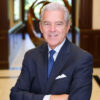
(Also offered on Monday at 3:20pm)
High performance requires effective execution and, for many organizations, change management. Unfortunately, major change efforts have a dismal track record. In multiple studies, highlighting the experiences of hundreds of companies initiating large-scale changes, the overwhelming results are poor. For example:
As the Harvard Business Review’s editor articulated so well in discussing why so many transformation efforts fail:
“…no business survives over the long term if it can’t reinvent itself. But human nature being what it is, fundamental change is often resisted mightily by the people it most affects: those in the trenches of the business. Thus, leading change is both absolutely essential and incredibly difficult” (Kotter 2007).
Learning Objectives:
Jim Austin

CFP®, CIMA®, CPWA®, CIMC®, and RMA℠ Eligible
Most financial professionals recognize that asset allocation, long a predicate of portfolio construction, dynamics, implementation, monitoring, and rebalancing, is a fundamental determinant of investment risk and return. However, many asset classes are highly correlated and respond to common sources of risk, return, correlation and other characteristics known as investment factors. Long understood as comprising the building blocks of investment performance in academia and the buy-side, factor-based investing is now becoming democratized and increasingly present and available in broader circles. This session will define factor-based investing, present evidence on the existence of factors in returns, and how factors, factor betas, and factor premia may be use to create portfolios and to assess investment performance. Covered will also be how factor-based investing relates to traditional active management, the “new” definitions of alpha and beta, implications for multi-asset class investing, the advent of smart-beta strategies as well as their implications for investing with alternatives.
Learning Objectives:
Christopher Geczy

CFP®, CIMA®, CPWA®, CIMC®, and RMA℠ Eligible
This course will examine the overall structure of global capital markets. It will compare USA equity performance with Developed Market equity and Emerging Market equity and address different methods to invest such as ADRs, and ETFs. It will also explore return characteristics of different asset classes in the global bond markets and discuss the impact of currency risk on foreign investments.
Learning Objectives:
Gordon Bodnar

CFP®, CIMA®, CPWA®, CIMC®, and RMA℠ Eligible
Taking a company public is not for the faint-hearted. Investors must be cajoled, regulatory oversight is intense, and the fees paid to investment banks can be enormous. This session will walk you through the going public process, focusing on the initial public offering, the restrictions on marketing the offering, and the ways the SEC is trying to make a dauntingly difficult process more friendly to firms. In addition, comparisons to direct listings and initial coin offerings will be made.
David Zaring

How do you see your organization? As machine, organism, brain, culture, politics, psychic prison, flux and transformation, or domination? Building on the work of organizational theorist Gareth Morgan, this session highlights eight metaphors or ways of viewing organizations. By providing a way of seeing that casts certain perspectives into the light and forces others into the shadow, metaphor emerges as a valuable tool for learning about organizations, their values and vulnerabilities. This session will give you an opportunity to explore organizational metaphors through the use of video clips, to draft and consider short case studies about telling moments in your organization, and work in pairs or small groups to craft recommendations that would build on organizational strengths and minimize weaknesses.
Learning Objectives:
Anne Greenhalgh

CIMA®, CPWA®, CIMC®, and RMA℠ Eligible
(Also offered on Wednesday at 8:45am and 1:30pm – This class will require pre-work to be completed prior to Institute Week.)
The Herrmann Brain Dominance Instrument (HBDI™) is a 120-question diagnostic survey, the answers to which indicate an individual’s thinking style preferences. Our minds have preferred modes of operating that impact how we see the world, how we interpret what we see, and how we communicate with others who are also operating from their own preferred modes of thinking and speaking. Thinking preferences influence communication, decision-making, problem solving, and management styles. By understanding their thinking style preferences, participants will gain a new perspective of themselves and the people with whom they interact each day. In this HBDI session, a series of interactive exercises is used to get participants comfortable with the model, conversant about each of the 4 styles, and aware of the dangers of over-simplifying the process. This session offers a wide range of exercises and will choose a combination of exercises specific to each group’s needs. Participants will also explore when thinking styles are problematic. Through development of self-inventory, participants will learn about their own hot buttons and the hot buttons of others and develop strategies for addressing these situations in a constructive manner. During the program we also address the effects of individual and team HBDI data on some main leadership issues of our time, like enhancing our agility and creative thinking in times of fast pace change and ambiguity. This course will require a 120-question survey to be completed prior to the participants’ arrival.
Learning Objectives:
Chuck McVinney

Ever wish you could be more influential? Be better at motivating yourself and others? Make smarter decisions and shape group opinion? This talk will show you how. Wharton professor Jonah Berger will share insights from his new bestseller, Invisible Influence. Influence is a powerful tool, but to harness that power, we have to understand how it works. You’ll learn why others make us faster runner but worse parallel parkers, why elite athletes tend to have older siblings, and what Goldilocks can teach us about launching successful products and ideas. You’ll never look at your own behavior –or the behavior of others—the same way again.
Jonah Berger

Participants will learn how to conduct an effective After Action Review and will participate in the “Crossing the River” exercise, a practical application of leadership, innovation and strategy in a challenging team environment. Participants will learn a cutting-edge technique called the “After Action Review.” The After Action Review (AAR) is used by many organizations, including the U.S Army, Navy Seals, Police and Fire Departments, surgical and trauma teams, and more recently, corporations to create a learning culture and focus on continuous improvement and sharing best practices across teams and organizations. Leaders can leverage the AAR to implement and reinforce change efforts, improve process execution, shape culture and influence employees to learn from past performance.
Learning Objectives:
Todd Henshaw

CFP® Eligible
The M&A landscape has undergone significant changes in the past decade. In an active, discussion-based format, participants will analyze how and why the M&A process has transformed over the past several years, and what we can expect to see going forward. Participants will leave this session with a deeper understanding of the distinction between effective and ineffective M&A strategies, as well as a set of tools and techniques that will help them outperform their competitors in pursuing and implementing value-creating deals.
Emilie Feldman

(Previously taught as a lunch lecture)
| P Purpose |
| E Experiential Frames |
| R Range of Options |
| C Contrary Views |
| E External Future Forces |
| P Productive Paranoia |
| T Trust |
| I Internal Culture |
| V Vigilance |
| E Experimentation |
Effective leaders recognize they must carefully manage both the external and internal environment. They inspire, provide clarity of purpose, seek diversity of thought and contrary views, and build a culture of trust. Leaders also develop a keen awareness of external forces and turn threats into opportunities by building an organizational capability of adaptability. In short, leaders build a PERCEPTIVE organization that is poised to achieve and maintain sustainable positive results.
After the session participants will be able to:
Kathy Pearson

Everyone in strategy is saying that the key to growth, even just survival, is via continuous and rapid innovation. But the real key to growth via profitable innovation is the strategic development and management of your knowledge: the insights of your employees, your technology, your core competences, and your intellectual property. This session will provide you with the foundation from which to prosper in this, the knowledge age. It will give you specific tools and frameworks to map your critical knowledge, design a program to strategically develop your knowledge, and then exploit it to successfully grow your organization.
Learning Objectives:
Martin Ihrig

(Previously titled Strategies for Success)
(Also offered on Wednesday at 8:45am)
Nearly every businessperson agrees that to have a successful company you need a good strategy, yet few people create a “Success Strategy” for their own lives. During this session attendees will complete several personal exercises to help them gain clarity on what they must do to create a more happy, balanced, successful life and career. This program is shared with senior executives at major organizations around the world and more than 90 colleges and universities in America and beyond.
Learning Objectives:
John Spence

(Previously taught as a lunch lecture)
Gallup’s Strengths-Based Approach to Leadership will offer insights into how you can lead your people to achieve high performance and exceed their goals. The foundation of a Strengths-Based Approach is understanding your strengths as leader, which you’ll experience through the Gallup CliftonStrengths Finder assessment – taken prior to the session and with results available to you upon completion of the assessment. With your unique Strengths as a guide, the session will empower you to build on what you do great today – your strengths – and apply new ways of leading and managing your teams. You’ll leave the session with an understanding of how you can leverage and apply your Strengths every day.
Jeremy Pietrocini

7:15am – 8:15am
Breakfast will be served at all SII hotel properties.
8:45am – 10:15am
In today’s VUCA world change is a constant. Therefore, leaders need to lead change and not just manager a change process. In this session we investigate when change is necessary and how to lead it effectively. Participants identify key leadership roles and opportunities during the process of change as well as obstacles they may encounter and how to overcome them. Using examples, discussion and video clips we also explore how employees experience change, and how leaders can guide them through the change process while providing growth opportunities.
Learning Objectives:
Dafna Eylon

10:35am – 12:05pm
CIMA®, CPWA®, CIMC®, and RMA℠ Eligible
Over the last few years the financial services industry has been inundated with the topic of Machine learning, but many of us are now beyond basic definitions and futurist views of what it can do. Now we need to know how this is practically applied in our business and what to do next to begin to dig in. With this course, Ram Seshadri, Program Manager for AI/ML at Google will take you through real life examples of how ML can be used in real world scenarios, and the implications to you as leaders in your business. Areas like Fraud and Anti-money laundering use cases will be discussed specific to the financial services industry. With this course you can finally go beyond the definitions and learn more about the real stories of application.
Ram Seshadri

Critical to credit provisioning is the ability to determine borrower’s default chances. We discuss how to develop a data-driven credit model and how to measure its performance in the context of business tradeoffs. We then turn to machine learning, develop deep intuition for one of the most robust and versatile frameworks in this area and evaluate its performance on actual loan data, and discuss the opportunities and challenges presented by big data and machine learning.
Shimon Kogan

New interfaces for collecting data (e.g. chatbots, wearables) and new methods for analyzing data including text and images (e.g. machine learning) have the potential to significantly accelerate the pace of innovation in people analytics. Furthermore, new infrastructural developments (SaaS and full stack solutions) are making new technological advancements broadly accessible. This session will examine some of these emerging trends and the promise they hold as well as some of the significant challenges they are likely to pose for managers and policy makers.
Prasanna (Sonny) Tambe

Disruption in Financial Services is no longer the exception…it has become pervasive. To combat disruption and exceed growing customer and user expectations, companies must understand the friction points and “art of the possible” (when it comes to removing friction points – also known as “target experience design”)…then be prepared to embark on disruptive transformation initiatives of their own. This session aims to develop a common understanding of what disruptive transformation is, outline the key design principles which enable companies to “truly transform”, and provide real use case examples of “what good looks like” (and “what bad looks like”!) when it comes to digital-led transformation in Financial Services. We will deep dive on CX and UX as part of the transformation agenda: the role of CX and UX in the operating model, why being customer / user-centric is important, and how to go about developing these capabilities. Finally, we will explore the digital solutions available to enhance CX and UX, with a specific focus on automation (RPA, VR/AR, AI and ML).
Learning Objectives:
Eric Rich, John Stefani


CIMA®, CPWA®, CIMC®, and RMA℠ Eligible
The incidence of reported cybersecurity breaches has grown by more than 66% in just the past three years. And, as new technologies continue to emerge, it’s become increasingly challenging to stay ahead of cyber criminals. This is especially relevant for the financial services industry as we rely on the latest digital innovations to optimize the customer experience. Chad Renfro, Head of Enterprise Cybersecurity at Fidelity Investments, offers his insight on the changing dynamics of the global cyber threat landscape and recommendations on the preventative measures you can take to keep your business, your customers and yourselves cyber safe.
Chad Renfro

12:30pm – 1:15pm
Longtime SII instructor and international business consultant, executive coach, author and speaker, John Spence will lead an interactive lunch discussion on a topic decided upon by the participants. A survey will be sent to you prior to the event to select from subject matter within John’s areas of study for his preparation (and yours) for group discussion.
Learning Objectives:
John Spence

1:30pm – 3:00pm
CIMA®, CPWA®, CIMC®, and RMA℠ Eligible
The session focuses on the question of how to sustain a successful enterprise during periods of disruptive change. It draws on case studies and recent examples to discuss the challenges of managing discontinuous changes in an industry. The instructor will share frameworks that enable a systematic approach to evaluating and managing the different types of changes confronting a firm both from strategic and organizational perspectives.
Learning Objectives:
Rahul Kapoor

Leaders inspire, build capacity in others, lead change, and motivate employees to do more than they thought possible. This session includes a short exercise where we watch film clips to identify inspirational leadership behaviors. The team exercise involves teams participating in a video case about the Civil War Battle of Gettysburg, a dynamic and situation where they must determine how to inspire soldiers to overcome their frustrations to fight along with their unit. Each team presents an inspiring vision and employs inspirational behaviors to respond to the crisis. Selected individuals deliver the team’s vision statement to the class. Learning Objectives After this session, you should be able to: – Discuss the impact of ambiguity and uncertainty on individual psychology and performance – Recognize the components and leader behaviors associated with inspirational leadership: leadership that promotes a personal connection, builds confidence, demonstrates a caring attitude, and includes great expectations – Employ these behaviors in a video case, and learn how to construct and effectively communicate a vision for followers.
Learning Objectives:
Todd Henshaw

Gallup finds the quality of managers and team leaders is the single biggest factor in your organization’s long-term success. These findings were recently published in the best selling book ‘It’s the Manager’. Organizations everywhere in the world have a tendency to name the wrong person manager and then train them on administrative things — not how to maximize human potential. Bad bosses destroy workplace culture and the future workforce wants & needs managers who are more of a coach investing in their development. This workshop will help you gain insights and actions on how to make that shift. [participants will receive a copy of ‘It’s the Manager’ as a pre-read prior to attending]
Learning Objectives:
• Insights around the changing workforce and the role of managers
• Understand how creating a culture of engagement is critical to the employee experience
• Discover how focusing on strengths is the best way to develop your team members
• Learn to have powerful conversations that are critical to driving performance
Jeremy Pietrocini

For over 30 years, John Spence has taught leadership and organizational culture to companies around the world. Through contemporary work with his clients and research, John sees shifts that will require leaders to develop new skills and attitudes to be successful. During this session John will cover:
This session will be thought-provoking and attendees will learn specific ideas and tools they can use to be successful leaders of the future.
John Spence

What is the most important thing for living a happier life, even in financial services? What about for building a higher-performing team?
Expanding on one of SII’s most popular sessions, this new deeper dive into happiness and team dynamics can improve your life both personally and professionally. Attendees will learn:
All attendees will receive free memberships to a special online site so you can continue applying what you learned after you leave Wharton and share it with your families and teams.
Andrew Bernstein

3:20pm – 4:50pm
CIMA®, CPWA®, CIMC®, and RMA℠ Eligible
On Monday March 9, this remarkable bull market will turn 11 years old, one of the longest and most durable in history. Is it on its last legs, or does it have much further to run? Professor Robert Shiller of Yale University, author of Irrational Exuberance and Nobel Prize winner will face off in a classic bull-bear debate against our own Jeremy Siegel, author of Stocks for the Long Run, to assess the prospects for the economy and market.
Robert Shiller, Jeremy Siegel


7:00pm – 9:00pm
Sponsored by Broadridge Financial Solutions, Inc.
Join fellow SII 2020 participants for a night of networking and fun at the National Constitution Center. Dinner and drinks will be served.
Featured Exhibit: Civil War & Reconstruction: The Battle for Freedom and Equality
7:45am – 8:30am
8:45am – 10:00am
CFP®, CIMA®, CPWA®, CIMC®, and RMA℠ Eligible
The 2020 election is poised to mark an inflection point in our country’s future. The parties offer starkly different views on issues that will define American policy for years to come. The economy is paramount, but many of the country’s most contentious issues will be on the table, including trade, healthcare, taxation, fiscal policy, foreign relations, infrastructure, immigration, individual rights, and others.
In addition to these substantive issues, the election could act as a referendum on the incumbent’s personality and performance. The House impeachment inquiry only adds to that dynamic.
Although the election run-up will overhang the upcoming year’s events, Washington still must address the country’s business. Congress will seek to fund the federal agencies; continue oversight of companies in the technology, financial services, and other sectors; and pass legislation expanding the ability of workers to save for retirement. At the same time, the president will continue to pursue a trade policy of imposing tariffs and negotiating favorable trade agreements.
Jeff Bush’s 2020 presentation addresses all of these issues. He shares his insights on the upcoming election, from the Democratic primaries and nomination through the election of the president, House, and Senate in November. His discussion provides a unique analysis of the factors likely to influence the result and the markets’ reaction. His presentation also delves into the market effects of the House impeachment inquiry. Finally, he analyzes and predicts the outcomes and consequences of substantive matters – such as trade – that Congress and the president are likely to undertake in the coming year.
In addition to these insights, his presentation provides strategies that investors and financial advisors can consider to take advantage of (or protect against) market effects and volatility arising from Washington initiatives and the road to the election, as well as specific strategies for investment, wealth transfer, and retirement planning.
Jeff Bush

10:00am – 11:00am
In this conversation, Philip will explore the different between Talent and Gift and how this affects our ability to impact the world. He will help the audience understand, uncover and unleash their gift on the world.
Philip McKernan

11:30am – 1:30pm
(Re)align your Life for more Meaning. Developed from working with the U.S. Military, Olympic Athletes, and Entrepreneurs, Philip will do a dive deep on the identity crisis facing so many people today. Philip will help the audience to get clear where they are misaligned, understand where to pivot or transition, so they experience more meaning in their lives.
Philip McKernan

1:30pm – 2:30pm
Takeaway containers will be available